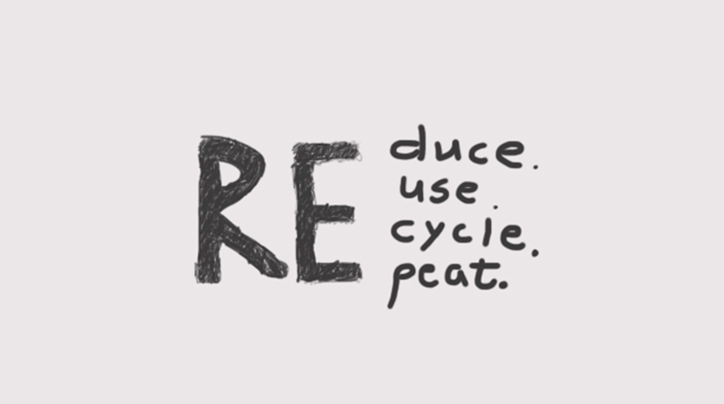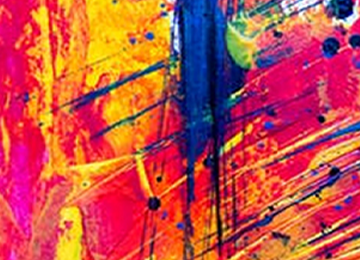blog
How AI is Changing the World of Digital Ad Design Services

The digital ad design industry is a big one. In fact, Google accumulated $264 billion just from advertising revenue in 2024. But now, AI is reshaping ads in quiet but powerful ways. Creative teams use it to explore fresh ideas, test more versions, and learn what truly resonates. Media teams use it to match the right message to the right moment.
And leaders use it to shorten cycles and cut waste. But you should understand that the result is not cold automation. Instead, it is faster learning and simpler workflows that let people focus on big ideas. Privacy rules are changing and measurement is evolving, so guesswork has less room to hide. AI helps teams adapt.
To explain all of these, I wrote this article to walk you through where the change shows up in day-to-day work, how to use it with care, and what to build next so your ads stay effective and fair.
What AI is actually changing in creative work
AI is not a magic button. It is a set of tools that make creative work more focused and repeatable in the world of digital ad design services. Many teams now plug AI into display ad design to reduce the busywork and raise idea quality.

Image Source: Design Cloud
Here is where the lift shows up most clearly:
- Faster ideation. Use prompts, brand rules, and audience notes to spin a large batch of concepts. Keep the ones that fit. Park the rest for later.
- Layout suggestions. Vision models can scan a mockup and flag weak contrast, clutter, or hard‑to‑read text.
- Copy support. Language models can draft short headlines and CTAs that fit character limits and tone.
- Variant generation. Create dozens of safe layout‑copy‑color mixes from one base concept for quick testing.
- Creative QA. Automated checks catch banned words, missing legal lines, or off‑brand colors.
From one idea to one thousand safe variants
Scaling creative was typically a time-consuming process. However, AI now allows you to take a single concept and quickly produce a controlled number of variations. This is especially important for Display Ad design, where there is a lot of variation in sizes, placements, and contexts.
- Templates with guardrails. Restrict the logo area, color tokens, and spacing rules. AI can then change photos, background shapes, and CTAs within those limits.
- Smart cropping and adaptation. Vision models cut images for square, portrait, or wide units without removing important elements.
- Language localization. Adjust length of lines for different languages, keeping the original intent and reading level.
- Accessibility made easy. Automatically verify color contrast, minimum font sizes, and alt text suggestions for screen readers.
Real‑time learning without waste
Experimenting was previously a lengthy process of A/B cycles. AI, however, makes always-on learning possible in smaller doses.
- Adaptive testing. Algorithms divert the money to better variants while the test is still going, which minimizes waste.
- Contextual signals. Models consider the page context, time of day, and device type to decide the most relevant creative at that very moment.
- Fatigue control. Systems observe for decreasing response and bring in new concepts before the performance drops.
- Creative diagnostics. Heatmaps and vision features show which elements attract attention or get ignored.
Personalization with privacy in mind
The rules for tracking users are changing across the web. Teams are transitioning from using personal profiles to privacy-respecting methods.
- First-party data. Compile customer lists of your own and shape creative messages based on consented site events.
- On-device and cohort logic. Instead of unique profiles, ads can target broader groups or be basic matching that runs inside the user’s device.
- Contextual and intent signals. Page topics, recent site actions, and time-based cues all help in picking a message without using personal IDs.
- Clean collaboration. If privacy-preserving environments are required for measurement and reach, matching occurs in the limited areas without any raw data being shared.
Generative visuals that stay on brand
AI can propose new images and short video clips from plain text. That speed is exciting. The challenge is brand safety and consistency.
- Style systems. Turn your brand book into prompts, palettes, and reference images. This guides the model toward your look.
- Reference‑based editing. Feed approved product shots or icon sets so new assets feel like they belong together.
- Content safety. Use filters to screen for sensitive imagery, bias, or cultural red flags before review.
- Human review. Keep final judgment with people. A short creative board can green‑light only the strongest outputs.
Copy that feels human and simple
Short copy is still hard. AI can make it easier without sounding robotic.
- Multiple tones, one voice. Ask for playful, calm, or bold, then align to your voice guide.
- Message maps. Tie features to benefits and to audience pains. Models can draft lines that connect those dots.
- Character‑fit helpers. Keep to strict limits for tiny units without losing meaning.
- Plain‑language checks. Grade-level tools help keep reading simple for everyone.
Measurement is changing too
As tracking gets stricter, measurement relies more on creative quality and less on user trails.
- Attention signals. Instead of just views and clicks, teams look at time in‑view, motion, and engagement cues to judge quality.
- Experiments at scale. Use geo splits, holdouts, and uplift models to prove impact where user‑level tracking is thin.
- Media‑creative fusion. Creative elements like color, layout, and motion are treated as variables in the same way placements are, which makes optimization more holistic.
Guardrails, ethics, and trust
AI-powered advertisements should be just and open. Construct these protective measures in your work.
- Provenance tags. Add secure origin tags to pictures and videos so that partners can identify how the assets were created and modified.
- Disclosures where needed. In case your ads feature AI-created images or voices, inform the users in an easy-to-understand language at the place if the policy requires it.
- Bias checks. Check creative to see if it is balanced in representation and does not have any unintended stereotypes. Change figures, locations, and roles.
- Copyright respect. Use internally originated or licensed assets to train the internal models. Keep records of sources and rights.
- Data minimization. Incorporate just the signals that are enough to achieve the goal. Get rid of the rest of the data.
New roles on modern ad teams
Artificial Intelligence cannot take the place of a human mind. It is a power that adjusts the positions to allow individuals to deliver better quality work in less time.
- Creative strategist. Serves as an interpreter between the brand’s objectives and experimentally verifiable creative hypotheses.
- Prompt librarian. Sorts out prompts, reference visuals, and style principles as a shared system.
- Automation wrangler. Install one smooth system with the help of tools, templates, and QA steps.
- Ethics lead. Administers policies, disclosures, and audits.
- Performance creative lead. Analyzes the data and makes the call on which ideas to grow.
A practical AI workflow for ad design teams
Follow this straightforward manner to have AI serve you without making a mess.
- Specify the task to be accomplished. One distinct goal per flight. For instance, boost the add‑to‑cart rate from display by 10%.
- Producing the message map. Top 3 benefits and the proof points for each one are to be listed.
- Incorporate brand and safety regulations. While colors, spacing, logo use, no‑go topics, and cultural checks have already been dealt with, tackle the issue of AI-generated content next.
- Go for a concept batch. AI can help you come up with 20250 quick concepts related to the message map.
- Triage and refinement. Usually, the person who is responsible for the human quality review gets through 5 to 8 of the most promising directions.
- Building variants. Create differing size adaptations, color swaps, and 3 to 5 headline options for each new creative direction.
- Start adaptive tests. Begin with small budgets, and along the flight shift the weight towards winners gradually.
- Catch early signals. Viewer engagement metrics such as attention, scroll depth, and click quality can eliminate the underperforming variants.
- Freshness maintenance through rotation. When wear-out comes, change the new creative for an old one. Keep a checked and ready for use alternate one.
- Document and learn. Write down the prompts, settings, and results with the purpose of making the following season quicker.
Creative quality checklist for Display Ad design
Before you ship, run this checklist to catch issues fast.
- Text is readable on small screens at arm’s length.
- Color contrast meets accessibility standards.
- Key visual is clear at a quick glance.
- CTA is short, active, and visible.
- Image crops protect the subject in every size.
- File sizes meet load speed targets.
- Motion is smooth and purposeful, not flashy.
- Variants cover at least three distinct messages.
- Alt text is present where supported.
- Final assets include provenance tags.
Common pitfalls to avoid
Even strong teams hit snags. Watch for these and set fixes early.
- Over automation. If everything looks the same, creative wear‑out arrives fast. Keep room for bold human ideas.
- Prompt sprawl. Without a library, teams repeat work and lose the thread. Centralize prompts and examples.
- Vanity metrics. High click rates can hide poor conversion quality. Tie tests to outcome metrics.
- Policy drift. Standards and platform rules evolve. Review disclosures and safety filters each quarter.
- Data creep. Do not collect signals that do not change decisions. Less is safer.
Conclusion
AI is changing ad design in ways that feel practical and human. Teams move faster because busywork shrinks. Ads feel clearer because tests push weak ideas aside. Measurement values attention and clarity, not just clicks.
Privacy is becoming a design input, not an afterthought. None of this replaces taste or judgment. It frees time for them. The teams that win will pair small experiments with steady guardrails, then scale what the data confirms. Keep the workflow simple.
Keep the language plain. Keep people in charge of the final call. And if you need a partner who already works this way, agencies can be a helpful ally. Together, you can build ads that respect users and still perform.
